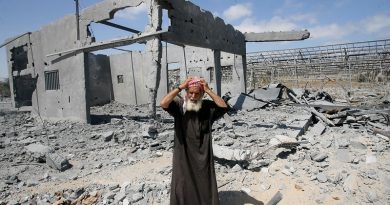Focus on Civilians in Conflict: Journalists
Alyssa Veltre
Staff Writer
They say the first casualty of war is truth, and in the past three decades, the truth has suffered a great deal. Starting with the assassination of Tajar Djaout by extremists in 1993, over 1300 journalists have fallen victim to deliberate acts of violence against them, according to the Committee to Protect Journalists.
With the nascence of the information age, impartial non-propaganda media reports from war zones serve the vital and fundamental public interest. Public opinion has a decisive impact on the outcome of armed conflict. On-the-ground coverage of more than 1.3 million casualties and atrocities committed at the My Lai massacre informed public perceptions of the Vietnam War and embodied the spirit of modern-day war correspondence.
Journalists released news reports and images showing the horrors of the Vietnam War for what it was in its entirety. Later, these same journalists would publish the Pentagon Papers, leaking the government coverup of poor U.S. decision-making in the war, as reported by History. After discovering that America was the enemy in a pointless war, it was no longer enough to trust the media unless the media could prove what it was saying, according to History.
In a 2010 interview, ICRC Legal Expert Robin Geiss talked about the protection to which journalists, as civilians not taking part in violence, are entitled under international humanitarian laws. Journalists entering violent conflict or war zones are automatically granted Article 4A (4) of the Third Geneva Convention and Article 79 of Additional Protocol I: journalists are entitled to all rights and protections granted to civilians during armed conflicts. Geiss went on to express deep concerns over the high number of violent acts against media professionals. The late war photographer Tim Hetherington was killed by shrapnel from a mortar shell by Libyan forces while covering the 2011 Libyan civil war.
As public access to information becomes faster and easier in the digital age, control over the release of information, particularly images and footage, is increasingly difficult. Journalists looking to accurately portray the realities of war often get caught in the crosshairs.
“Media professionals are increasingly at risk of being wounded, killed, detained or kidnapped while reporting in armed-conflict situations,” according to the International Committee of the Red Cross.
However, conventions and laws are not enough to ensure compliance with international law. It takes agreement, knowledge, and compassion to enforce them, and the media loses more valued members when a group or government has ulterior motives. Somali broadcast Journalist Abdiwali Ali Hassan was shot several times near his home in the town of Afgooye on February 16 for his freelance correspondence work with London-based Universal TV. He had been receiving anonymous threats for reporting on the Somali National Army operations in Lower Shabelle, a topic on which he focused his last report for Radio Kulmiye, according to The Committee to Protect Journalists.
Another recent example of media censorship by assassination was in Ukraine this past year. Two journalists were killed as they covered the bombardment of villages in Slovyansk, trying to figure out who was responsible for destroying houses and terrorizing civilians, according to The Washington Post.
The imperative in this fast-paced, electronic world seems to be either to pay off a source in the entertainment world or kill the information on the battlefield. According to UNESCO Observatory of Killed Journalists, of the journalists who have died in combat zones since 1993, most were killed for the purpose of censorship. The information any journalist can hold has the potential to change public opinion. Just as private houses are opened to protect the wounded and civilians provide life-saving medical equipment, journalists protect the truth. Without public trust in a cause, that cause will lack the material goods it needs to survive, leaving journalists as the first greatest enemy in a warzone and truth as the first greatest casualty.


